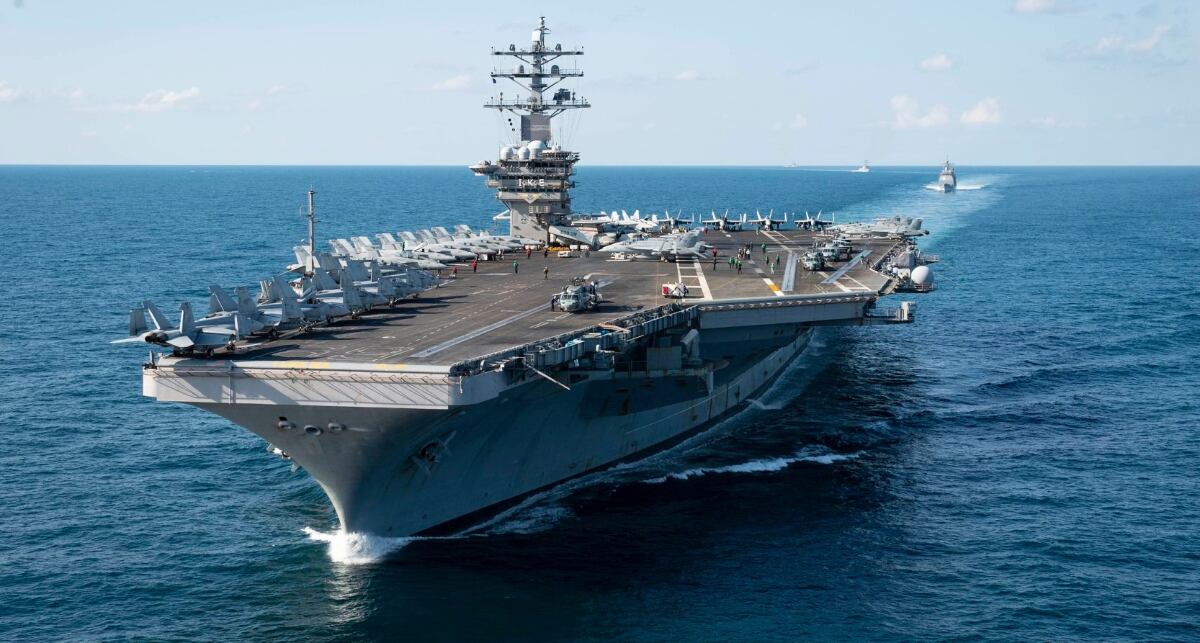WASHINGTON — An internal study from the Office of the Secretary of Defense is looking to pour money into large robot submarines that the U.S. Navy says will free up its larger manned submarines for more complex missions, according to documents obtained by Defense News.
A study spearheaded by Defense Secretary Mark Esper’s internal think tank, the Cost Assessment and Program Evaluation office, recommended the Navy invest in as many as 50 extra-large unmanned underwater vehicles, or XLUUV, to massively boost the number of eyes the military has under the sea. That effort would be a fraction of the cost of Virginia-class attack submarines.
The study also recommends adding between two and three extra attack submarines over the 2016 force structure assessment that called for 355 ships, but the bulk of the new money will go toward unmanned systems.
The study, which envisions the fleet of 2045, is the same one that recommended the Navy drop to nine carriers from the current 11, and add dozens of large and medium-sized unmanned vessels to rapidly boost capacity for less money than it would cost to invest in a comparable fleet of larger manned vessels.
RELATED

The Navy awarded a $43 million contract to Boeing for the first four Orca XLUUVs in February 2019, and subsequently expanded the buy to five. The Navy plans to start buying two per year starting in 2023, according to a Congressional Research Service report from March 2020.
Together, the findings of the CAPE office’s study show what Esper has been saying publicly for months: that the U.S. Navy must get away from relying on large manned combatants to deliver capacity, and rapidly develop and field a fleet of unmanned surface and subsurface vehicles.
The Department of Defense previously declined to comment on the CAPE assessment, citing its policy not to comment on internal products that are “predecisional.”
Esper has taken a keen interest in Navy force structure, telling Defense News in March that he had directed CAPE, along with the Navy, to conduct a series of war games and exercises in the coming months to identify the path toward a lighter Navy. But, he said, any major decisions will be based around the completion of a new joint war plan for the whole department, which the secretary said should be finished this summer.
“I think once we go through this process with the future fleet — that’ll really be the new foundation, the guiding post,” Esper told Defense News. “It’ll give us the general direction we need to go, and I think that’ll be a big game changer in terms of future fleet, for structure, for the Navy and Marine Corps team.”
In recent comments at a small roundtable of reporters, Chief of Naval Operations Adm. Michael Gilday said the Navy’s latest force structure assessment, which is designed around a more closely aligned Navy and Marine Corps, would be completed by the fall.
Underwater robots
The idea behind XLUUV is to take over missions that larger submarines, such as Virginia- and Los Angeles-class attack submarines, perform now but that shouldn’t require a $3 billion hull to perform.
This is a problem that is exacerbated by an adversary that has proven itself more than willing to dump money into capacity that the U.S. Navy struggles to compete with, said Eric Wertheim, a naval analyst and author of “Combat Fleets of the World.”
“The whole project is one of those key areas, like directed energy, where the U.S. can play to its advantage of leveraging technology to offset its disadvantages when dealing with an adversary like China,” he said. “They just have the ability to throw large numbers out there, large numbers of people to man equipment with, and people are among the most expensive assets for armed forces — especially in Western countries.”
The missions that XLUUV would be most well-suited to perform are those that may be too dangerous for a larger manned boat, he said.
“You might be going into dangerous waters that otherwise you might not want to send manned personnel into,” he said. “But also, more importantly, is the kind of mission that Orca [XLUUV] would be doing, has the potential to help you deal with the kind of mentally and physically exhausting missions like anti-submarine warfare, mine warfare and intelligence collection where human senses get dulled over time.”
The Navy is also developing a family of unmanned surface vessels that are intended to increase the offensive punch for less money, while increasing the number of targets the Chinese military would have to locate in a fight.
That’s a push that earned the endorsement of Chief of Naval Operations Adm. Michael Gilday in comments late last year.
“I know that the future fleet has to include a mix of unmanned,” Gilday said. “We can’t continue to wrap $2 billion ships around 96 missile tubes in the numbers we need to fight in a distributed way, against a potential adversary that is producing capability and platforms at a very high rate of speed. We have to change the way we are thinking.”
David B. Larter was the naval warfare reporter for Defense News.






